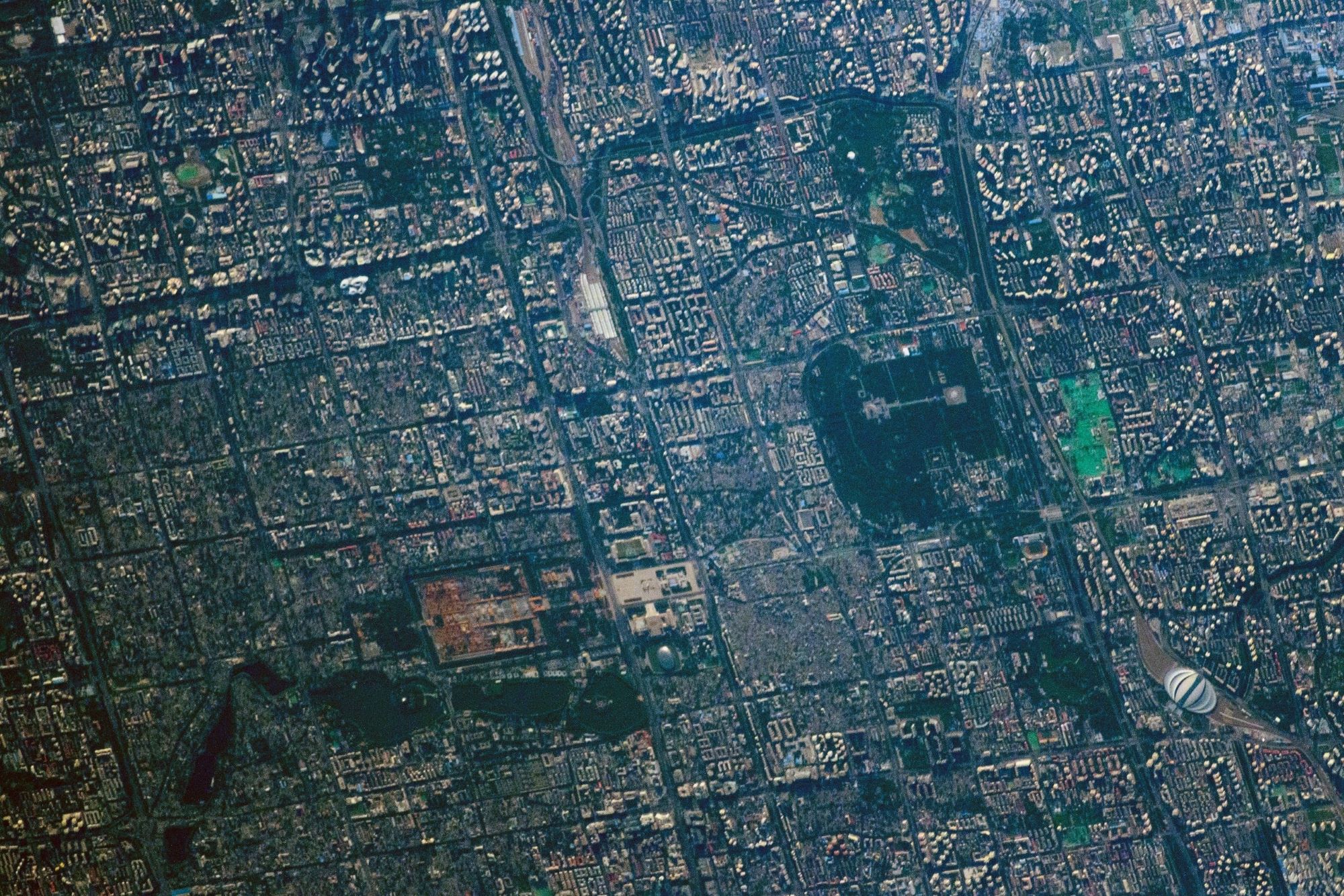[:ja]イワン・ワグナー宇宙飛行士がISSから撮影した中国の首都北京と紫禁城です。

紫禁城は、中華人民共和国北京市に所在する明清朝の旧皇宮である歴史的建造物で、「北京と瀋陽の明・清王朝皇宮」の一つとしてユネスコの世界遺産(文化遺産)となっています。敷地面積は72haあり、世界最大の木造建築群が建ち並んでいます。元(モンゴル帝国)のクビライが大都に建設した宮殿を明の成祖永楽帝が1406年から改築し、1421年に南京から北京へ都を遷してから、清朝滅亡まで宮殿として使われました。1644年の李自成の乱で明代の紫禁城は部分焼失しましたが、李自成の立てた大順を滅ぼし北京に入城した清朝により再建され、清朝の皇宮として皇帝とその一族が居住するとともに政治の舞台となりました。義和団の乱では皇帝とその一族が西安に逃亡し、イギリス・フランス・オーストリア=ハンガリー帝国・ドイツ・イタリア・日本・ロシア・アメリカによる八カ国連合軍に占領されました。
地上の様子はこちらです。

参考文献: Ivan Vagner’s Tweet
地球俯瞰画像を見る: LiVEARTH
[Earthview Wonders] No.1307: Beijing🇨🇳
Astronaut Ivan Vagner captured from ISS the Forbidden City of Beijing, China.

The Forbidden City is a palace complex in Dongcheng District, Beijing, China, at the center of the Imperial City of Beijing. It is surrounded by numerous opulent imperial gardens and temples including the 22ha Zhongshan Park, the sacrificial Imperial Ancestral Temple, the 69ha Beihai Park, and the 23ha Jingshan Park. The Forbidden City was constructed from 1406 to 1420, and was the former Chinese imperial palace and winter residence of the Emperor of China from the Ming dynasty (since the Yongle Emperor) to the end of the Qing dynasty, between 1420 and 1924. The Forbidden City served as the home of Chinese emperors and their households and was the ceremonial and political center of the Chinese government for over 500 years. Since 1925, the Forbidden City has been under the charge of the Palace Museum, whose extensive collection of artwork and artifacts were built upon the imperial collections of the Ming and Qing dynasties. The Forbidden City was declared a World Heritage Site in 1987.
The local scenery on the ground is as follows.
 Credit: Wikipedia[/captFion]
Credit: Wikipedia[/captFion]
Reference: Ivan Vagner’s Tweet
See earthview photo gallery: LiVEARTH[:]